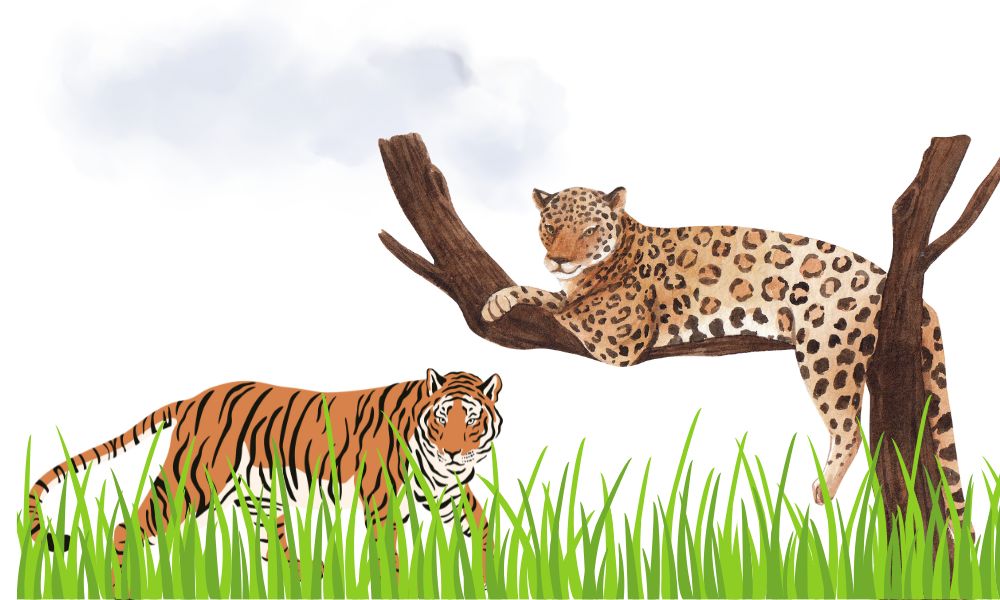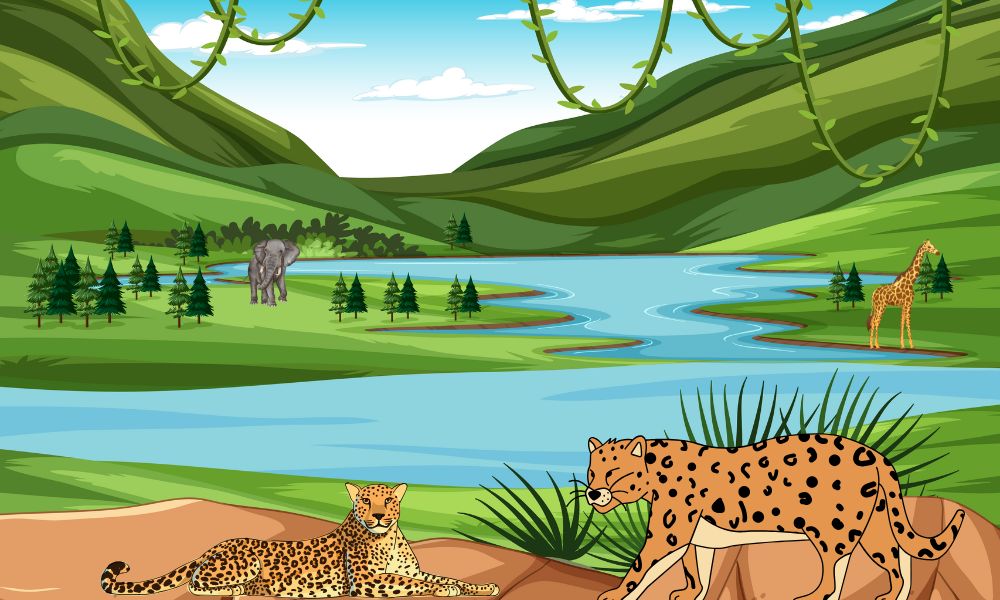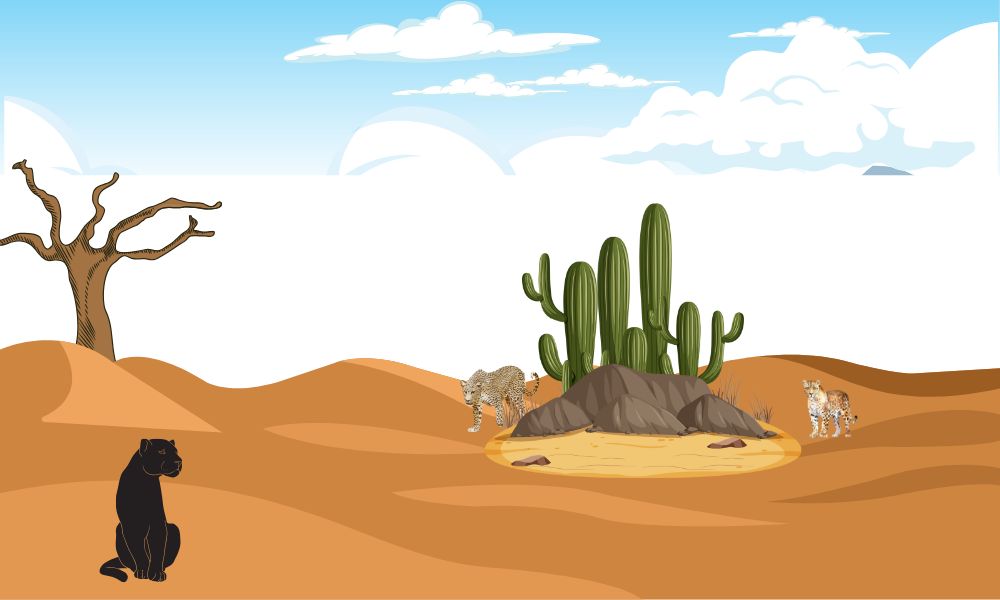When it comes to nature’s fiercest predators, leopards and tigers are the real deal. These big cats are built to dominate, and their bite force is a key weapon in their arsenal.
But how do they stack up against each other? In this article, we’ll dive into the nitty-gritty of the leopard’s and tiger’s bite forces, compare their strengths, and unpack what makes each cat a force to be reckoned with.
Buckle up for a wild ride through the jungle, complete with some FAQs to clear up any lingering questions.
The Leopard: Small but Mighty
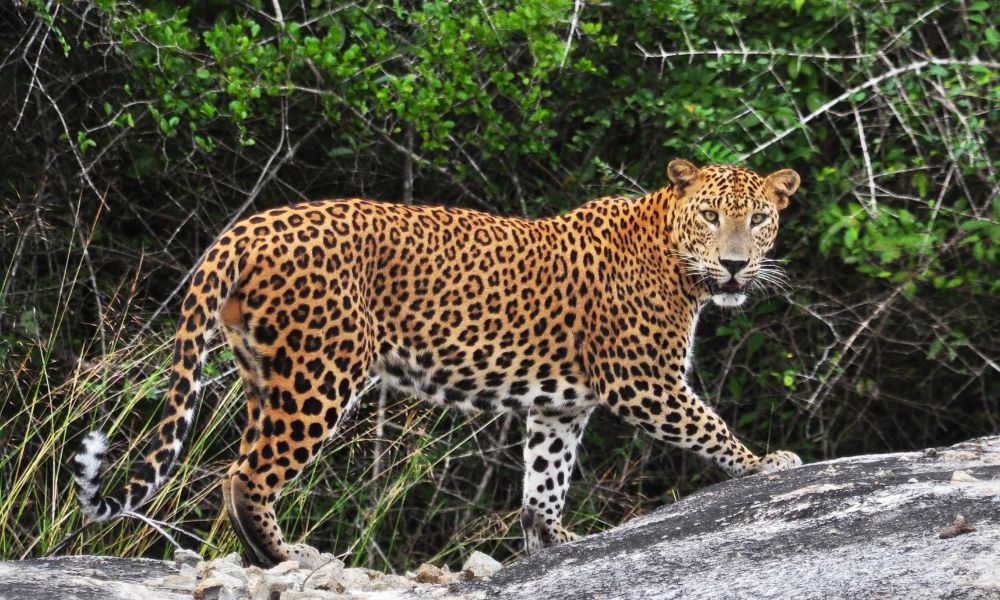
Let’s start with the leopard (Panthera pardus). This cat may not be the biggest kid on the block, but don’t let its size fool you—it’s a powerhouse in its own right.
Leopards weigh between 60 and 200 pounds, depending on their habitat, and they’re known for their stealth and versatility.
Their bite force comes in at around 700 pounds per square inch (psi). That’s no small potatoes! It’s enough to take down prey like antelopes, monkeys, and even the occasional crocodile.
What makes the leopard’s bite so effective? It’s all about precision. Leopards have sharp, curved canines and strong jaw muscles that let them clamp down with serious force.
They often go for the throat, choking out their prey with a suffocation-style bite. This technique is like hitting the off switch on their target—quick and efficient.
Plus, leopards are known for dragging heavy kills up trees to keep them safe from scavengers. That takes some serious jaw strength!
Leopards are adaptable, thriving in jungles, savannas, and even mountains. Their bite force is a big part of why they can handle such a wide range of prey.
From small rodents to hefty ungulates, leopards don’t back down from a challenge.
The Tiger: The King of Crunch
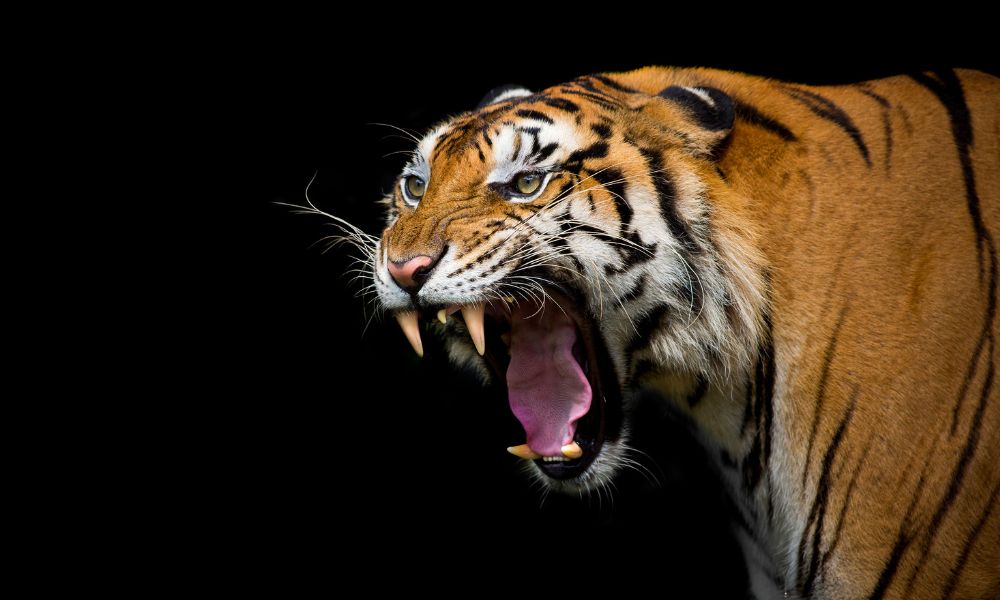
Now, let’s talk about the tiger (Panthera tigris). This beast is the heavyweight champ of the big cat world, tipping the scales at 200 to 670 pounds.
With size comes power, and the tiger’s bite force is a jaw-dropping 1,050 psi. That’s enough to crush bones and make short work of even the toughest prey, like water buffalo or wild boar.
Tigers are the kind of predators that don’t mess around—they go big or go home.
Tigers rely on their massive jaws and long canines, which can reach up to three inches. Like leopards, they often target the throat to suffocate prey, but their sheer strength means they can also tackle larger animals.
A tiger’s bite is like a sledgehammer—it delivers raw, overwhelming force. Their skull is built to handle this power, with thick bones and strong muscles that give them an edge in the wild.
Tigers roam forests, grasslands, and swamps, and their bite force is a game-changer in these environments.
Whether they’re taking down a deer or wrestling with a gaur (a massive wild bovine), tigers use their bite to seal the deal.
Leopard vs. Tiger: The Bite Force Breakdown
So, how do these two cats measure up? The tiger’s bite force of 1,050 psi clearly outmuscles the leopard’s 700 psi.
But hold your horses—it’s not just about raw numbers. Leopards are smaller and lighter, so their bite is impressive when you consider their size.
Pound for pound, they’re punching above their weight class. A leopard’s bite is tailored for quick, precise kills, while a tiger’s is built for brute force.
Think of it like this: a leopard is a ninja, striking fast and fading into the shadows. A tiger, on the other hand, is a tank, rolling in with overwhelming power. Both are deadly, but they play different games.
Leopards rely on agility and stealth, while tigers use their size and strength to dominate.
Another key difference is how they use their bites. Leopards often drag prey up trees, which requires a strong grip and sustained jaw pressure.
Tigers, with their larger prey, focus on delivering a crushing blow to bring down animals that outweigh them.
It’s like comparing a welterweight boxer to a heavyweight—both are tough, but they fight differently.
Why Bite Force Matters in the Wild
Bite force isn’t just a cool stat—it’s a matter of life and death. For both leopards and tigers, a strong bite means they can take on a wide range of prey.
Leopards need their bite to handle everything from small gazelles to tough-skinned warthogs.
Tigers, meanwhile, use their chomp to tackle massive animals like buffalo or even young rhinos in some regions.
The environment plays a big role too. Leopards, with their knack for climbing, need a bite that can hold onto struggling prey while they haul it up a tree.
Tigers, often hunting in open terrain or near water, need a bite that can overpower large animals quickly.
Their bite force is like their calling card—it’s what makes them top dogs (or cats) in their ecosystems.
The Science Behind the Snap
Scientists love to geek out over bite force. They use tools like bite force transducers to measure how hard these cats can chomp.
These devices mimic the resistance of prey, giving a clear picture of jaw strength. Studies show that tigers have larger skulls and more muscle mass, which explains their higher PSI.
Leopards, while smaller, have a more compact jaw structure that maximizes force relative to their size.
Evolution has fine-tuned these predators for their roles. Tigers, as the largest big cats, have jaws built for raw power.
Leopards, as smaller opportunists, have bites that balance strength and precision. It’s like nature handed each cat a custom toolbox for survival.
Protecting These Fierce Felines
Both leopards and tigers are under threat. Habitat loss, poaching, and human conflict are shrinking their territories faster than you can say “catastrophe.”
Leopards are listed as vulnerable, while some tiger subspecies are critically endangered.
Conservation groups like the World Wildlife Fund are stepping up to protect these cats, but it’s an uphill battle.
By supporting these efforts, we can help keep their bites in the wild where they belong.
FAQs
Wrapping It Up
The leopard and tiger are two sides of the same coin—both fierce, both deadly, but each with its own style. The tiger’s bite is a heavyweight knockout, while the leopard’s is a sneaky, precise strike.
Together, they show how nature crafts predators to fit their roles. Let’s keep rooting for these cats to thrive in the wild, where their bites can keep ruling the jungle.

